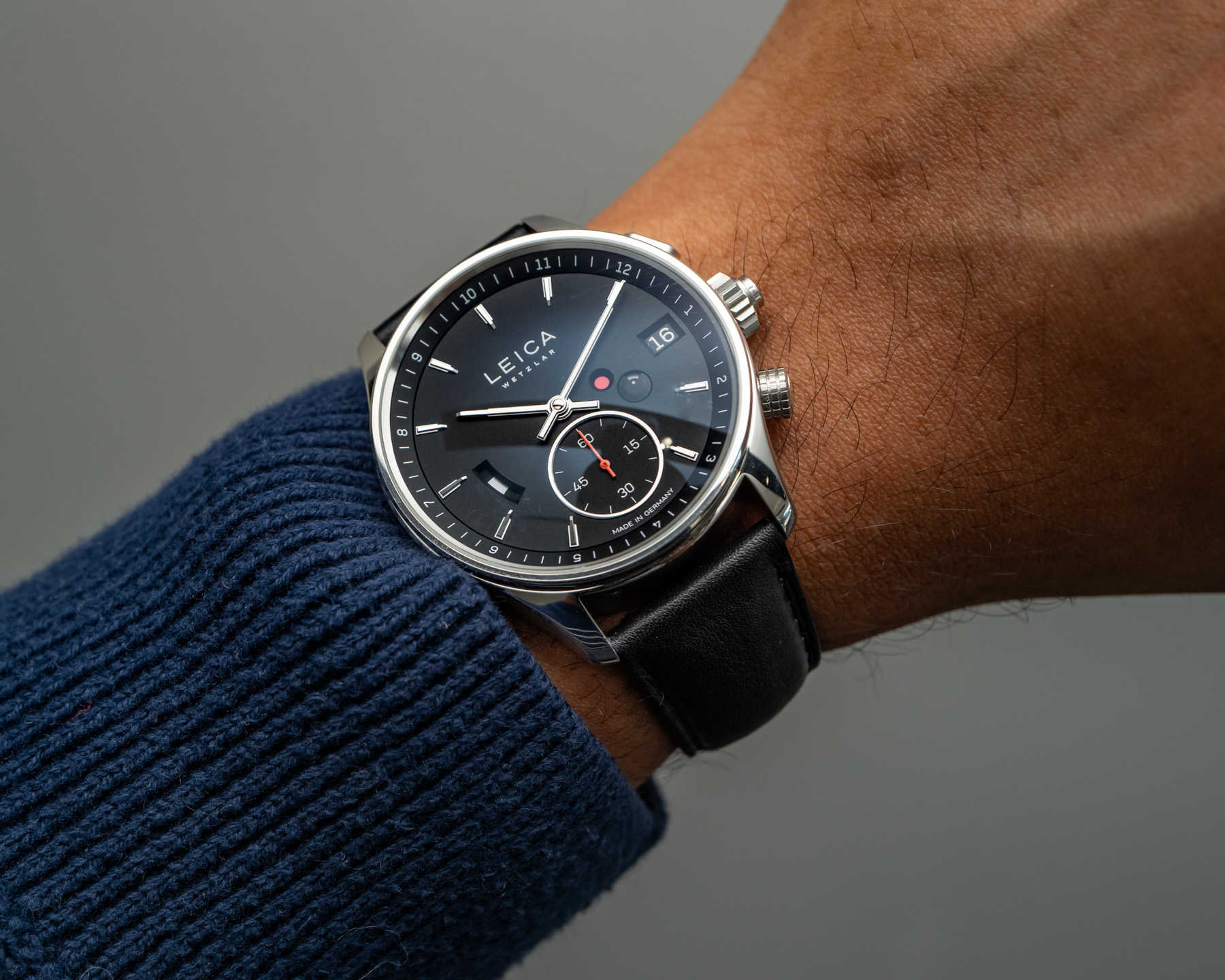
While it was unofficially announced back in 2018, German camera maker Leica just launched its first watch collection with the Leica L1 and L2 watches. Not simply a white-label creation with the Leica logo attached to it, the L1 and L2 are rather serious pieces of watchmaking that have an unexpectedly novel movement, as well. The two debut models are the time/date L1 and the L2, which adds GMT (or at least dual time zone as there’s no independently adjustable hour hand) functionality, as well. I got to go hands-on with the L2 here at the Leica boutique in Los Angeles, and I was pretty impressed overall, especially with the movement and aspects of the case design, especially considering this is the brand’s first watch.
Also, note that this is the one and only sample piece, so please be aware that some fingerprints or dust were just inevitable, as many people have been handling this watch. Also, thanks to the team at the Leica boutique in L.A. for taking the time to show me the L2, especially General Manager James, who knew the details of the watch inside and out.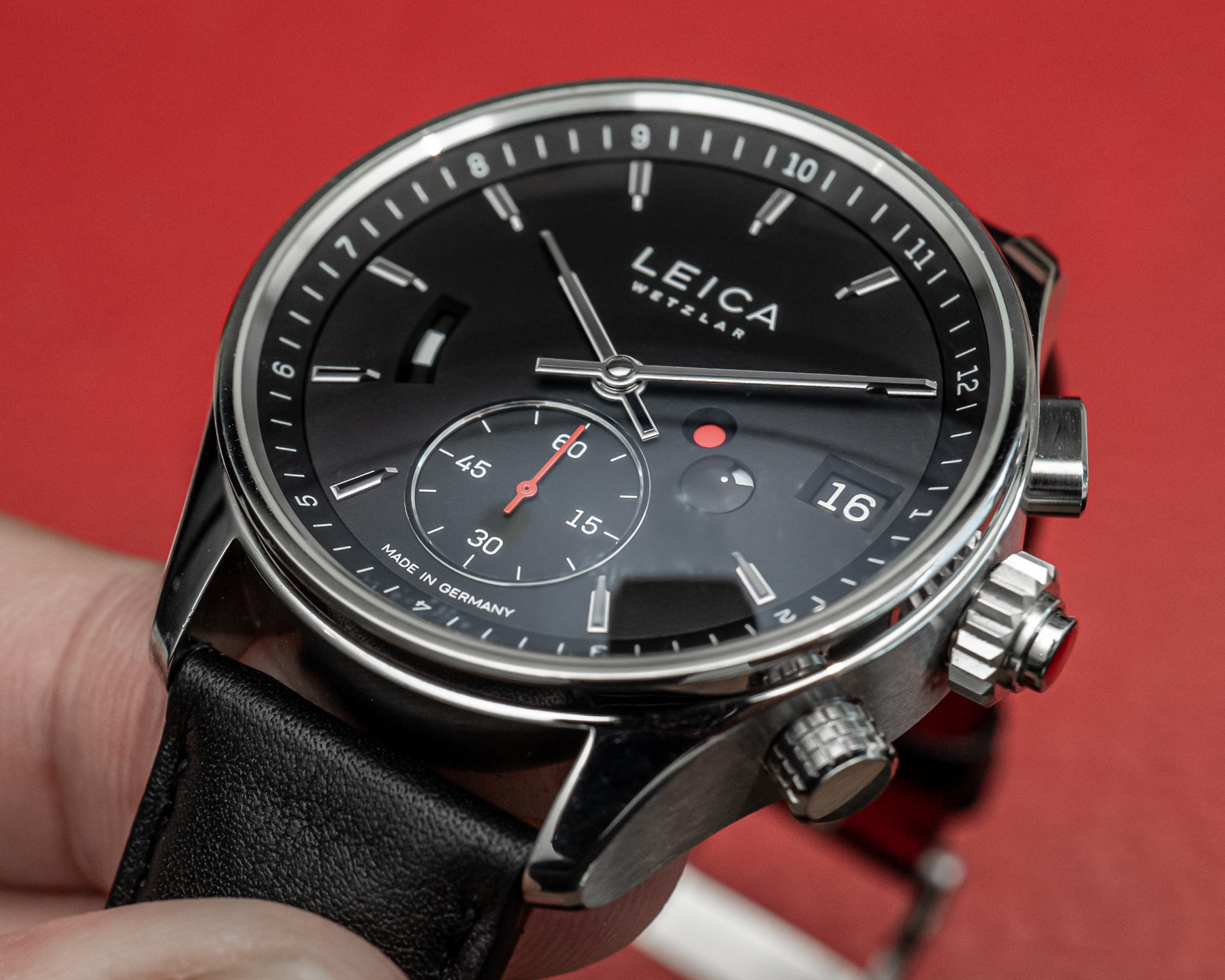
For a little background, Leica tapped camera-designer Achim Heine to help create a watch that’s tastefully inspired by the brand’s cameras but without going too far with that concept. As for the movement component, I know Leica was adamant about having a German partner and eventually landed on Black Forest-neighbor Lehmann Präzision. In addition to being a high-precision machinery manufacture, it also has its own watch brand, Lehmann Schramberg, which is said to do well in Germany but isn’t marketed much outside.
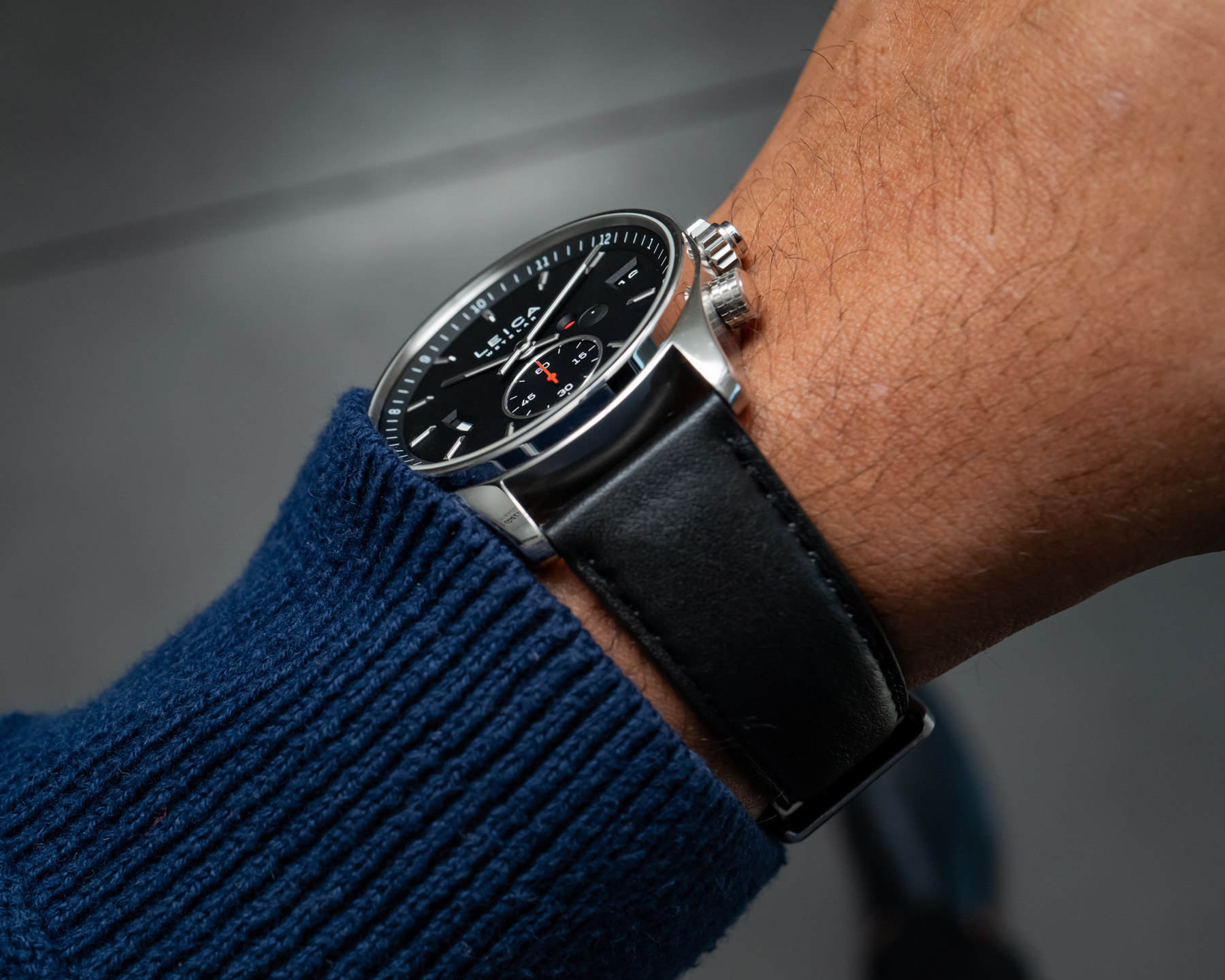
While I didn’t get to see the L1, the two watches are very similar with the exception of the addition of the GMT to the base movement on the L2. Measuring 41mm-wide and 14.5mm-thick (with 50m of water resistance), it’s easy to fantasize about trimming a few millimeters off the height and width, especially when considering both the substantial domed crystal and extended length of the crown due to the pusher. The case band does have some really nice curvature alongside the lugs that adds some aesthetically beneficial fluidity to the entire package.
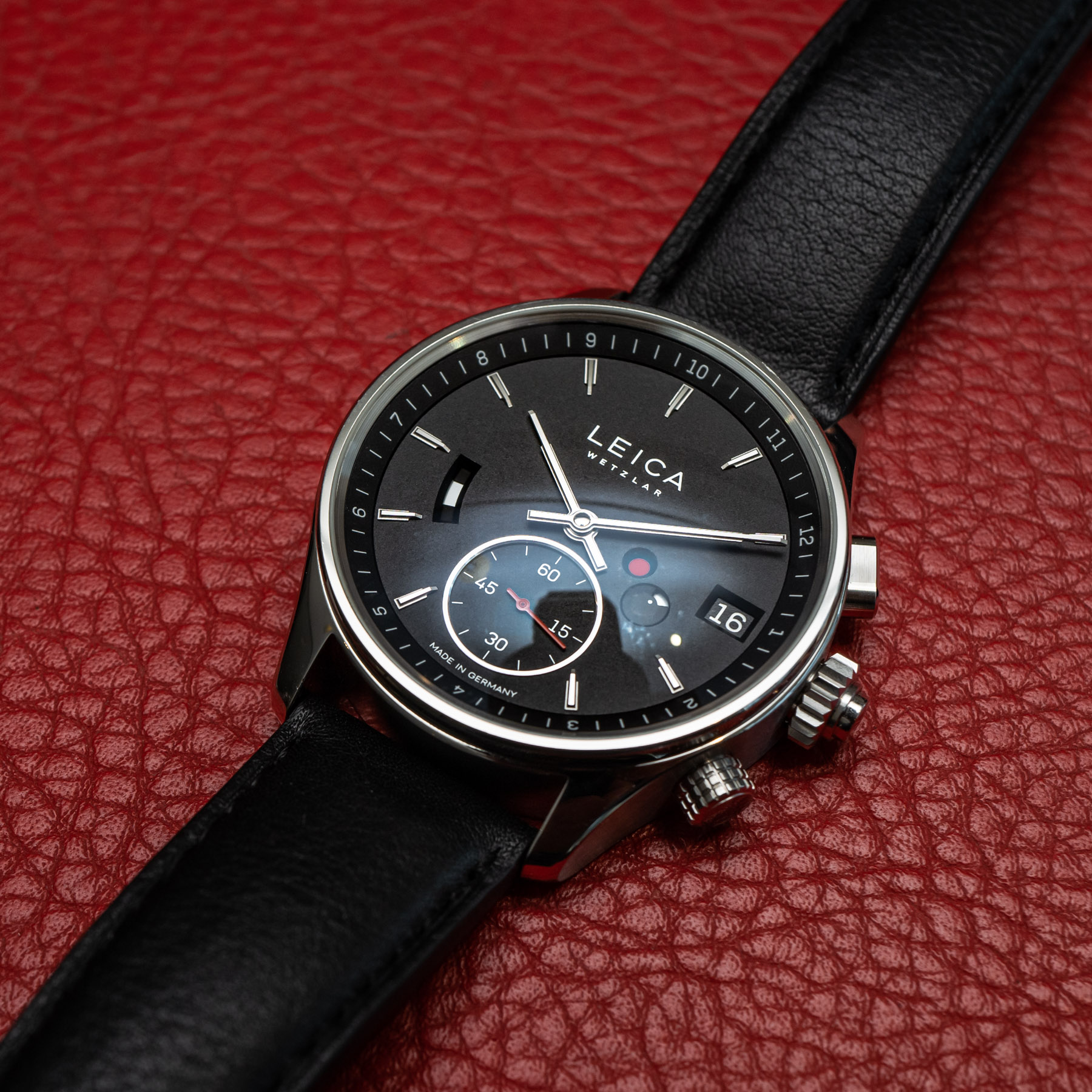
The nicely curved sapphire crystal is really quite well done, but it comes at the cost of some reduced legibility due to glare. While there is AR coating, I suspect it’s only on one side of the crystal, which just might not be enough. That said, it’s possible there’s double-sided AR coating and the glare is purely a side effect of the curved crystal. As you can easily tell from the photos, glare is almost unavoidable and, somewhat ironically, only pronounced through the lens of a camera (in this case, also a Leica).

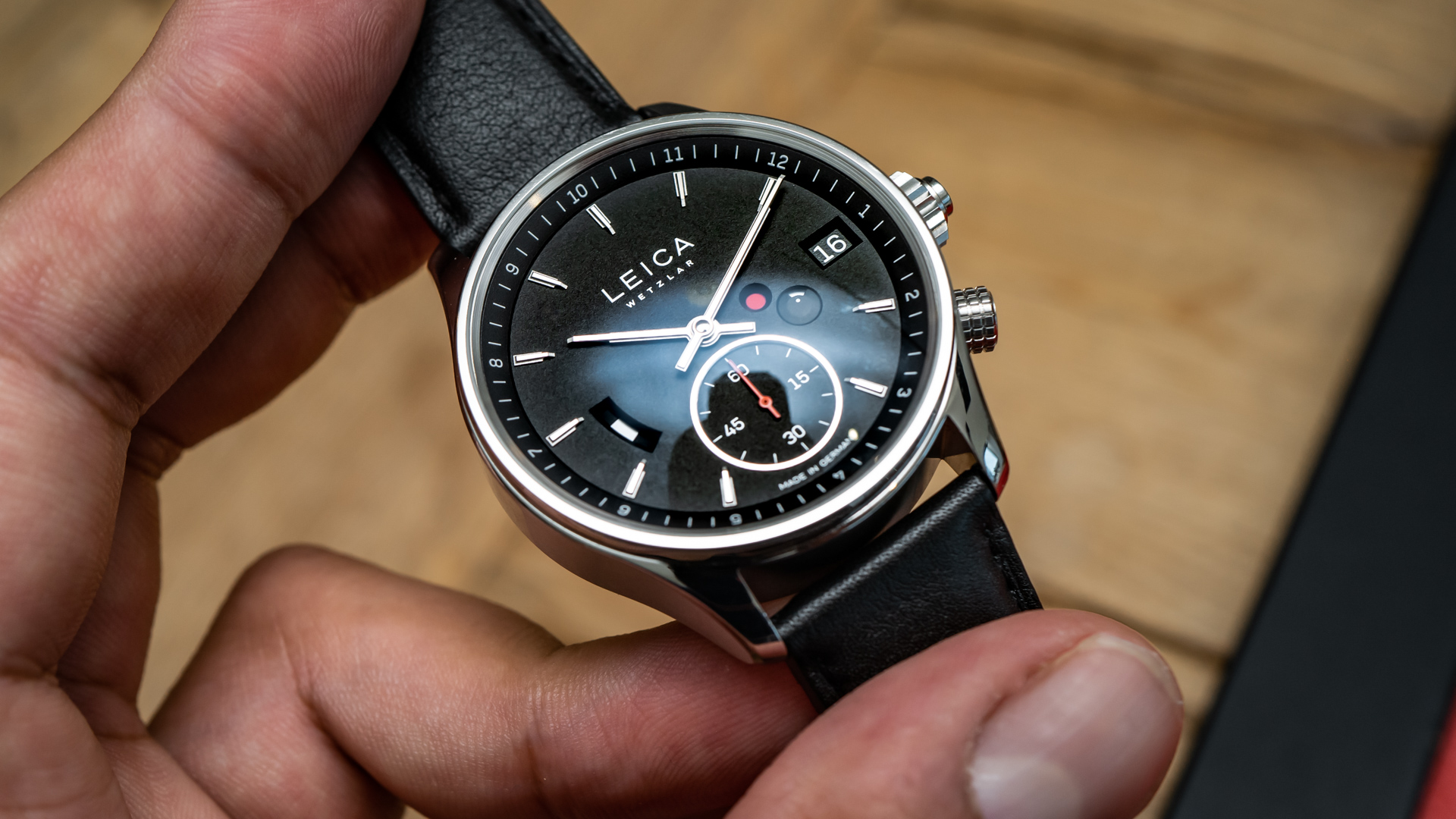
The most interesting aspect of the Leica L1 and L2 might be the novel use of the pusher/crown when setting the time. Any Leica user knows the brand’s iconic red dot logo, which is echoed on the edge of the pusher and on the aperture adjacent to the date window. By activating the pusher — which is actually linked to a column wheel — the aperture goes from white to red. When this is done, the seconds hand resets to 12 o’clock, and you are able to easily and accurately set the time. When the time is set, activate the pusher again and the aperture will go back to white, meaning the time is set and it’s back in winding mode. It’s a neat and easy way to set the time without the annoyance of dealing with the typical crown.

The pusher at 2 o’clock is used to set the date, which is simple enough. The crown at 4 o’clock is what’s unique to the L2 and not found on the L1. Turning this crown adjusts the rotating 12-hour inner bezel that tracks the second time zone and is complemented by the day/night aperture right next to the red/white dot aperture. Finally, the aperture at 9 o’clock is the curved power reserve indicator, which is really nicely done. Meant to evoke the light meter on a vintage M3 rangefinder, it has a blade-like appearance that subtly ties things back to the brand’s camera roots.
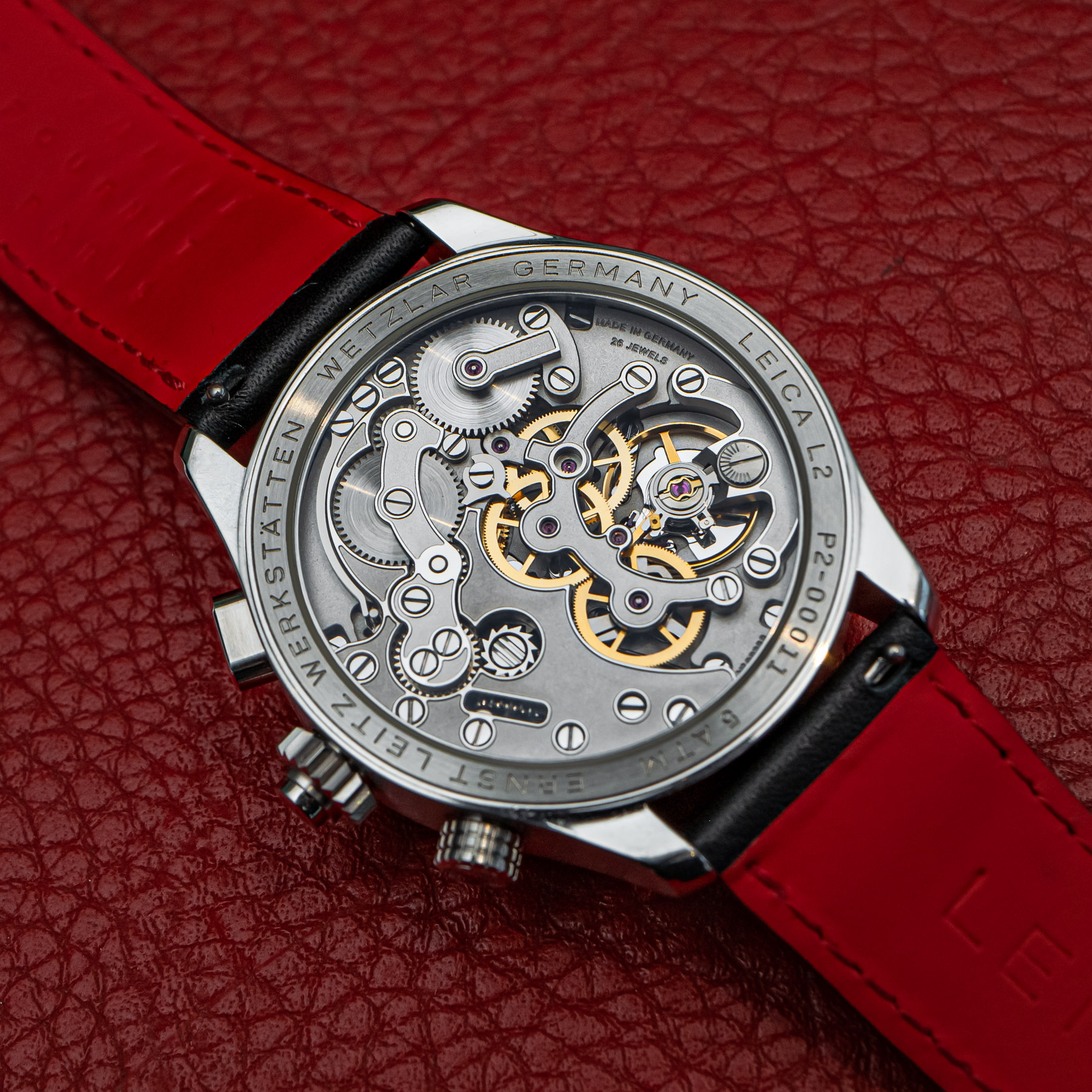
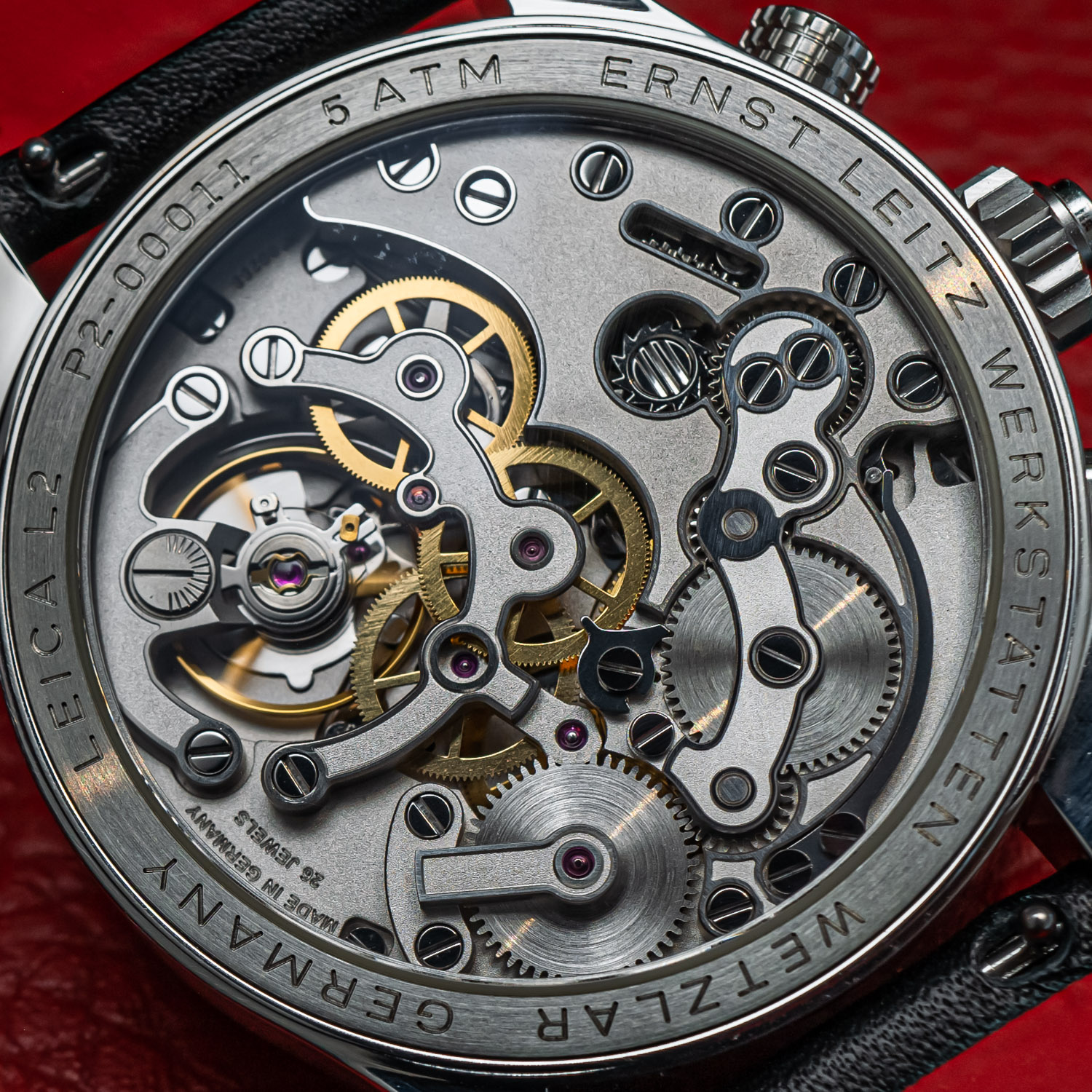
Turning the watch over shows off the beautifully industrial manual-wind calibre L2 movement, which has the same base calibre as the L1 and is exclusive to Leica. Done with partially open-worked bridges, you’ll notice anglage done on the raised edges and frosted surfaces. I couldn’t help but think that Grönefeld’s movement finishing served as inspiration albeit not nearly at the hand-finished level the Dutch brothers offer (at a minimum of five times the price). Operating at 28,800 vph, the Calibre L2 has a 60-hour power reserve.
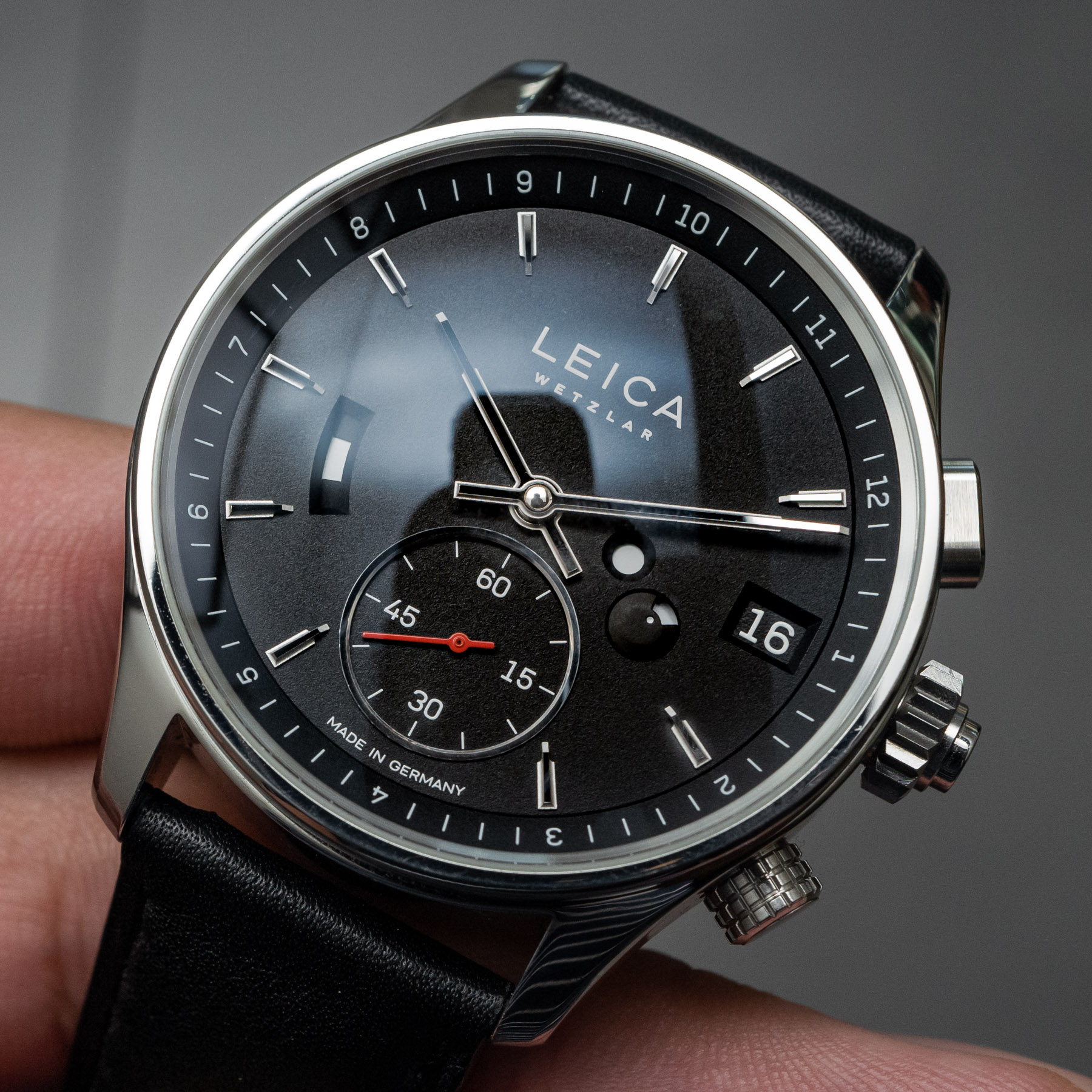
This is an impressive watchmaking debut from a 150-year old brand known for its cameras. There are really two main points of objection from my end, neither of which are close to being dealbreakers. The first is that I’d like to see a smaller case, mostly on the thickness side. The second has to do with the curved sapphire crystal which, while lovely in person, has the unfortunate side effect of causing glare and reflection even with an application of AR coating. It may seem trite, but it would be a shame for Leica to be deprived of stunning wrist shots of an otherwise highly impressive debut watch. I do admit this may be my bias as someone in digital watch media coming through too strongly. Also, to be fair, it’s not like they are producing these in mass quantities. While not limited, annual production will be in the hundreds.
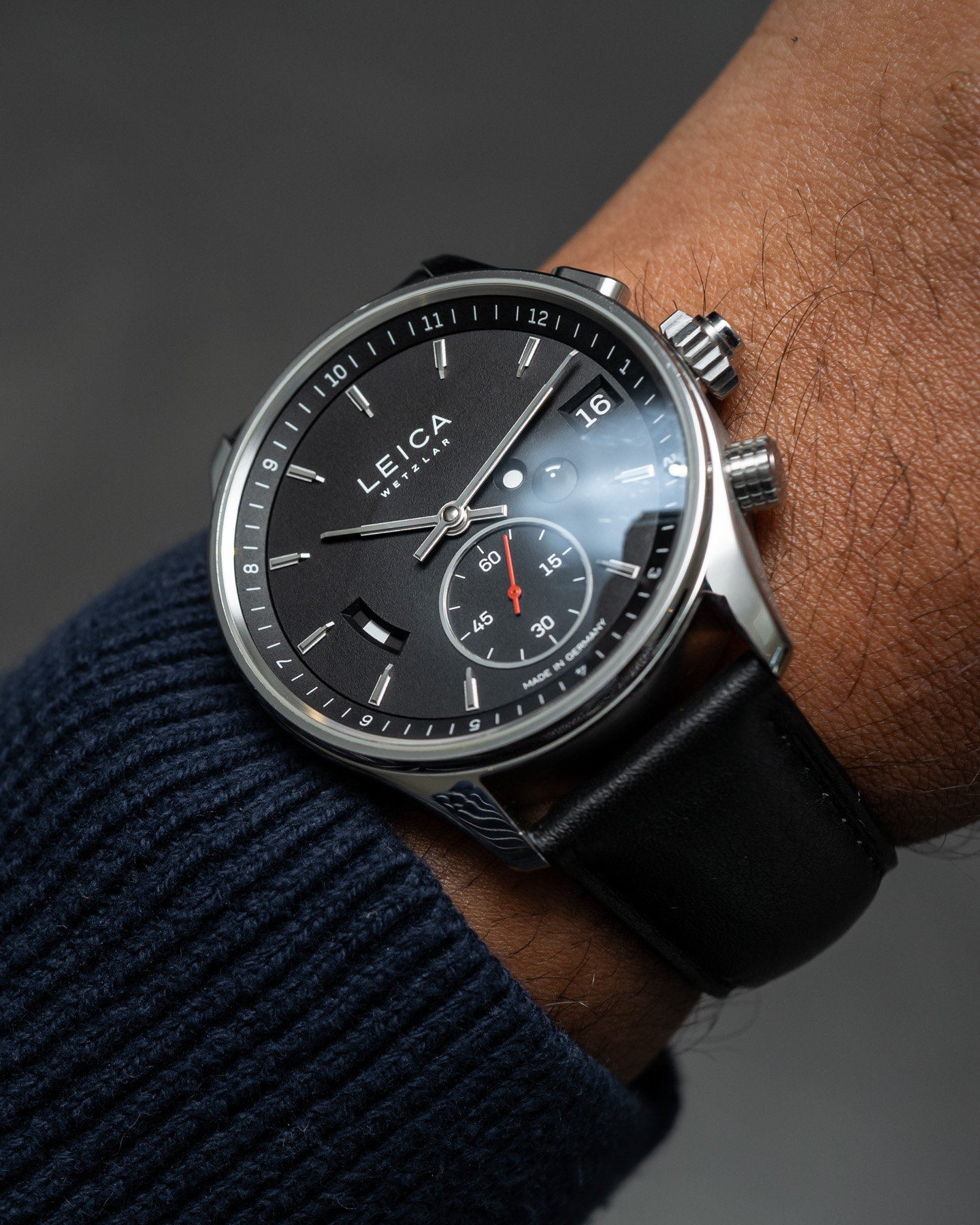
The Leica L1 and L2 are very well thought-out and designed watches with legitimate horological craft behind them. For the well-heeled Leica enthusiast who is also a watch collector, I imagine these will be a no-brainer. For now, if you’d like to check these out in person, they will only be available at seven Leica boutiques globally with the Los Angeles location being the exclusive branch in the U.S. I also have to say that I think these are very fairly priced with the Leica L1 priced at $10,000 and the Leica L2 seen here priced at $14,000. You can learn more at leica-camera.com.
